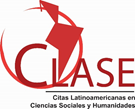Instrumentos de medición de neuromitos docentes para su empleo en Cuba y España
Resumen
La educación no puede quedar al margen del funcionamiento del cerebro de los discentes, como tampoco de los docentes. Ha emergido con fuerza el paradigma de la neuroeducación como pedagogía del futuro. Aglutina, principalmente, a la pedagogía, la psicología del aprendizaje y las neurociencias cognitivas. Reivindica ajustar la enseñanza al funcionamiento cerebral del aprendiente, reaccionando ante las escasas evidencias neurocientíficas del corpus teórico de la pedagogía y la didáctica. En parte, porque muchas han sido descubiertas recientemente gracias a la investigación neurológica y a los avances en el conocimiento del cerebro. A ello se suma que el cerebro no es algo inmutable, sino que su anatomía y funcionamiento varían según su empleo, de unos contextos a otros y, sobre todo, con la evolución de los tiempos, de generación en generación. De hecho, han venido proliferando en la sociedad los denominados neuromitos: malentendidos, imprecisiones, sesgos, distorsiones, bulos y errores sobre el cerebro y su funcionamiento. También se han identificado en el colectivo docente, con las consecuentes implicaciones negativas en la didáctica. Así pues, se requiere su superación, por el impacto positivo que tendrá en la educación. Se registran en este estudio los principales neuromitos docentes y los diversos contextos e instrumentos de indagación.
Palabras clave:
Neuroeducación, Neuromitos, Escalas de neuromitos.
ABSTRACT
Education cannot be ignored in the functioning of the brain of the students, nor of the teachers. The Neuroeducation paradigm has emerged with force. It mainly brings together pedagogy, learning psychology and cognitive neurosciences. It claims to adjust teaching to the brain functioning of the learner, reacting to the scarce neuroscientific evidence in the theoretical corpus of pedagogy and didactics. This is partly because much of it has only recently been discovered thanks to neurological research and advances in our knowledge of the brain. In addition, the brain is not something immutable, but its anatomy and functioning vary according to its use, from one context to another and, above all, with the evolution of time, from generation to generation. In fact, so-called neuromyths have been proliferating in society: misunderstandings, inaccuracies, biases, distortions, hoaxes and errors about the brain and how it works. They have also been identified in the teaching profession, with consequent negative implications for didactics. Overcoming them is therefore required because of the positive impact it will have on education. The main teaching neuromyths and the various contexts and instruments of enquiry are recorded in this study.
Keywords:
Neuroeducation, Neuromyths, Neuromyths scales.
Publicado
Cómo citar
Número
Sección
Licencia
Derechos de autor 2024 Editorial "Universo Sur"

Esta obra está bajo una licencia internacional Creative Commons Atribución-NoComercial-SinDerivadas 4.0.
La editorial "Universo Sur", de la Universidad de Cienfuegos, publica el contenido de la Revista "Universidad y Sociedad" bajo una Licencia Creative Commons Atribución-NoComercial-SinDerivar 4.0 Internacional.
© Podrá reproducirse, de forma parcial o total, el contenido de esta publicación, siempre que se haga de forma literal y se mencione la fuente.










